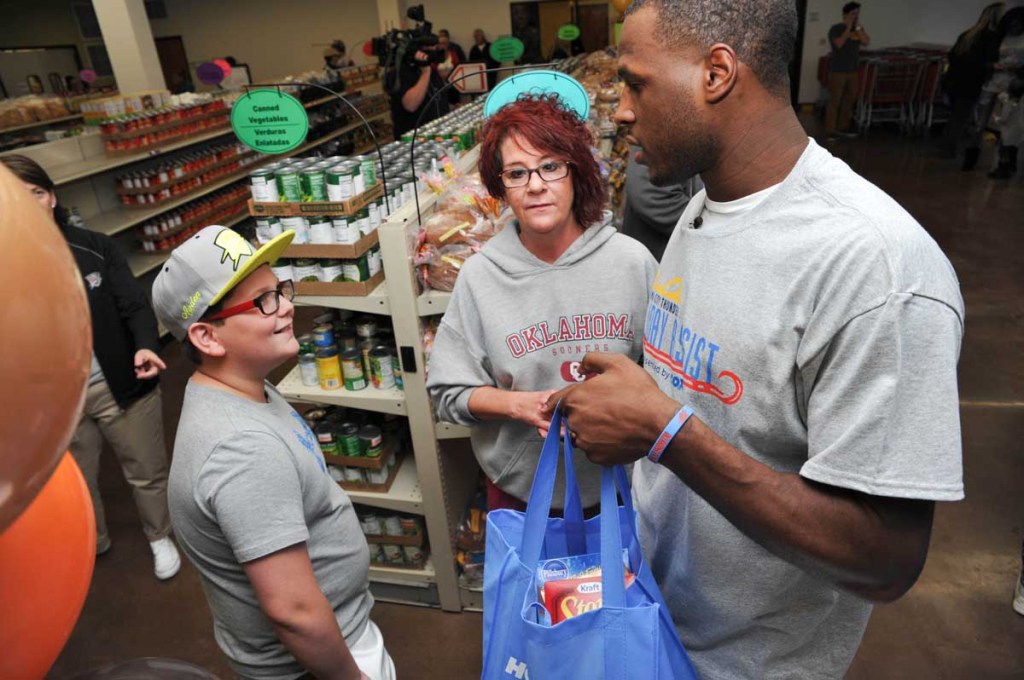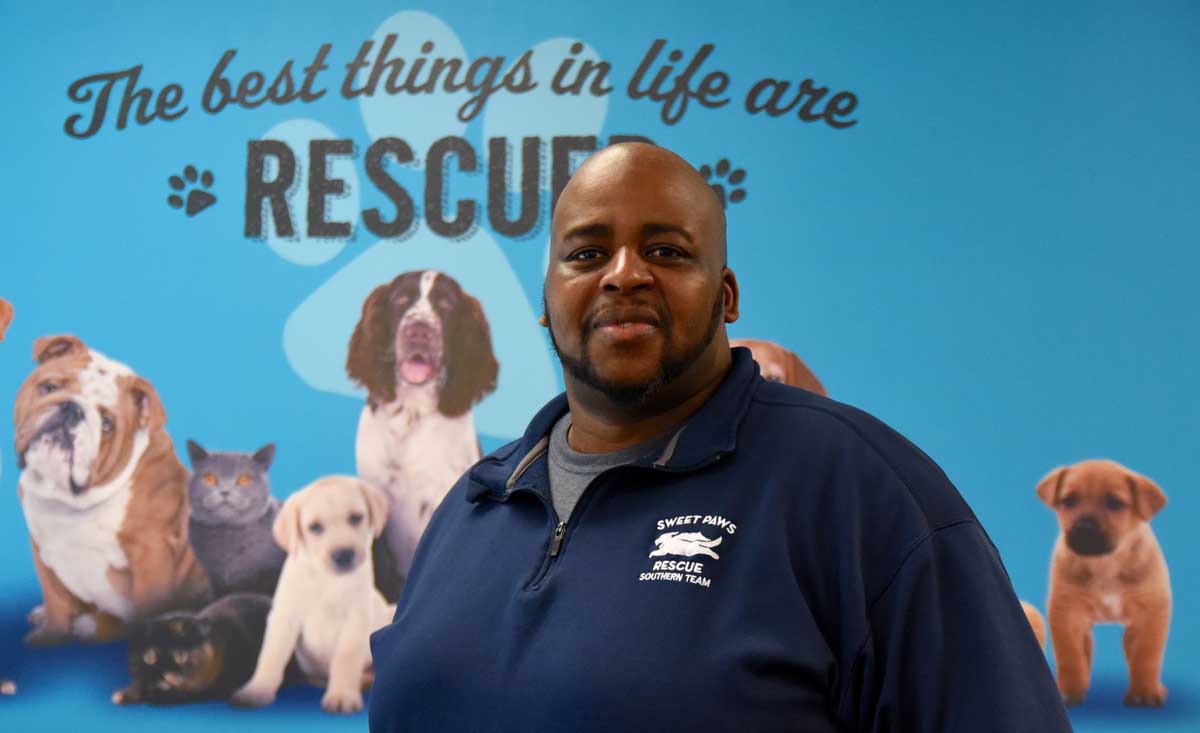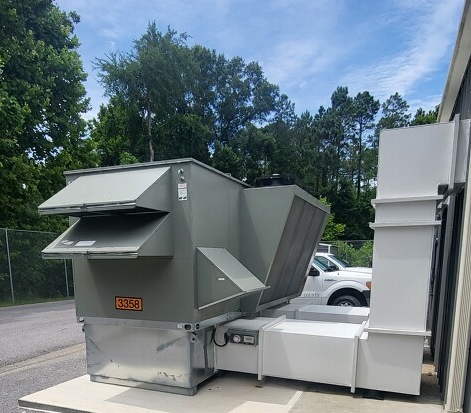NBA player joins fight against hunger
Published 1:00 pm Wednesday, November 25, 2015

- Oklahoma City Thunder player Dion Waiters hands out food at the Moore (Oklahoma) Food and Resource Tuesday, Nov. 24, 2015. (Kyle Phillips / The Transcript)
Dion Waiters didn’t have it easy growing up. Born and raised in South Philadelphia, the Oklahoma City Thunder guard remembers the nights he went to bed hungry, not knowing where his next meal would come from.
So as Waiters stood looking out upon a long line of people at the Moore (Oklahoma) Food and Resource Center (MFRC), he knew what they were going through because he had been in their shoes before.
Trending
“Just coming from nothing and knowing what it’s like, some nights where you’re hungry and you have nothing to eat,” Waiters said. “I came from that. I understand that. I understand the pain.”
Waiters was at the resource center as part of the Thunder Holiday Assist program. Along with his family, coaches and staff members, he handed out food and Thanksgiving dinners to 100 low income residents.
“We just wanted to give back to the people who are less fortunate,” Waiters said. “I just made it my business to just give back. I’ve always been the guy who never really had nothing in life. I was one of the less fortunate people. I just wanted to show them how important it is to give back to people.”
One of those who was glad to see Waiters was Oklahoma City’s Charlene Ramos and her two young boys. They are big fans of Waiters and the Thunder but even bigger fans of the MFRC.
“It helps a lot of people out,” Ramos said. “It helped me out because I didn’t have food for Thanksgiving and now I do. It’s a blessing.”
Food and resource centers are designed to be one of the most efficient systems in the country for food distribution and community collaboration in the fight against hunger. The centers opened in fall 2012, and eight are in operation, with an additional eight planned for the near future.
Trending
Food and Resource Center is a client-choice pantry. Those who qualify under certain income guidelines can every 30 days to shop for their own groceries. It’s meant to be about a seven- to 10-day supply.”
Most of the people who come to the resource centers are classified as working poor. They aren’t homeless or living on the streets. Many have jobs but are unable to make enough each month pay for everything they need to support their families.
“It really is a great resource because a lot of the people that come here are people who have jobs but can’t make ends meet, grandparents raising grandchildren on Social Security, single parents raising kids on one income,” said Skylar Parker, MFRC assistant director. “And, really, at the end of the month, they just need a little assistance.”
Parker said MFRC supplies around 1,600 families per month. They walk away with close to 95 pounds of produce per family.
Residents shop for their groceries. If they have medical issues, such as diabetes, allergies, etc., they can avoid harmful products.
But Parker said there is an even bigger reason for how the resource center is set up.
“It kind of restores their dignity,” Parker said. “It helps them feel like they’re shopping. Makes them feel good inside, instead of just being handed a box. It really is an amazing concept and idea, especially during the holidays, when people need a little extra assistance.”
Angie Doss, director of marketing of Regional Food Bank of Oklahoma, said hunger is a statewide problem.
“One in six Oklahomans struggle with hunger,” Doss said. “That means they have inconsistent access to food. So when they are ready to eat and they go home and they open their cupboards, there is no guarantee something is going to be there. Oklahoma is consistently one of the hungriest states in the nation.”
Waiters, who has only been in Oklahoma since the middle of the 2014-15 NBA season, didn’t know about the state’s hunger problem when he arrived at the resource center. But Doss said most Oklahomans do not realize how serious of a problem hunger has become.
“I think people would be surprised to know that 78 percent of our clients have reported having to choose between paying for utilities and paying for food,” Doss said. “That’s a staggering statistic, and the numbers aren’t getting better.”
Doss said one in four Oklahoma children struggle with hunger..
Waiters hopes he can be an example to children who were at the resource center, that they can rise above the hungry nights they are experiencing and grow to become whatever they want.
“For one, never let nobody tell you what you can’t do or can’t be in life,” Waiters said. “And, two, just never give up. Always strive to be the best that you can be. Always have faith. … Just always have faith in yourself. Let everything else take care of itself. I’m a living testament to that. First hand. I know. I’ve been told a bunch of times I would be nothing in life. When was bad in school, teachers told me that. Look at me now. I’m here.”
Kinney writes for The Norman (Oklahoma) Transcript





